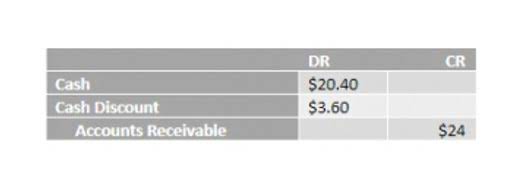
That can happen, for example, if you offer two weeks of PTO a year and an employee wants to use it all in February. You’d need to track the PTO used before it’s been earned, resulting in a negative PTO balance for that worker. It’s best practice to track your sick leave accruals and balances separately from PTO available for vacation and other accrued vacation meaning personal reasons. That’s because, in some states, sick leave must be paid out upon termination of an employee, while PTO doesn’t have to be. Often, salaried employees are granted a fixed rate of paid time off based on their average workweek—it can be a number of hours or days a year, such as 40 hours a year, or five days off for vacation.
A Primer on Accrued Expenses (6 Examples)
- Understanding these differences is crucial for both parties to ensure fair and effective vacation pay practices.
- You see above that the days for January 3,4, and 5 are highlighted for John Burns to indicate he took vacation on these days.
- The vacation pay payable account is classified as a current liability, since the payee (employees) can take their stored-up vacation time on short notice.
- When vacation pay is accrued, it is recorded as a liability on the balance sheet.
- For example, a two-week vacation allotment would equal out to eight days of PTO under this work schedule.
- These methods allow employees to accumulate vacation time gradually, aligning their earned time off with the hours they have worked.
- Accountants can choose between the current rate or the likely compensation rate when the employee will redeem the vacation days, discounted to present value.
In the above example, Jack Smith had a wage of $10 from January 1 until May 31. And from June 1st his wage changed to $15 and vacation rate increased from 4% to 6%. I’ll go over this calculation later in this post to show you that it has calculated properly in the reconciliation tab.
How to Get Certification from the Payroll Association Of Canada
Once you determine your PTO accrual rate, you will need to plug that rate into your payroll software or provide it to your payroll service provider. The amount owed to employees as of a specified date for the amount of vacation pay that has been earned but has not been taken. For example, the accrued vacation pay as of December 31, 2023 is the amount the employees have earned as of December 31, 2023 but have not taken as of that date.

Verifying the Vacation Reconciliation Calculations
You only record accrued expenses in your books if you run your business under the accrual basis of accounting. These short-term or current liabilities can be found on your company’s balance sheet and general ledger. Depending on your accounting system and accountant, they might also be called accrued liabilities or spontaneous liabilities. Vacation time, paid time off, paid leave, vacation accrual, and accrued pay, it can all get very convoluted and frankly, very confusing.

How Can an Accounts and Payroll Assistant Help Your Business?
A liability on the balance sheet can also simply refer to the paid time that is owed, which may be easily paid by a company with well-managed accounting and payroll divisions. Understanding what paid time off, vacation pay, accrual leave, how these payments are calculated, how they impact a company and accrued vacation meaning are all crucial pieces of knowledge. For example, the company ABC Ltd. has the policy of paying 2 weeks of vacation pay to its employees that work for 50 weeks at the end of the period. Hence, it needs to make accrued vacation each week which is equivalent to 4% per week (2/50). Accounting laws differ from state to state, and some line items are irrelevant for some companies.
- This method is particularly useful for part-time employees or those with irregular schedules, as it ensures that vacation pay is proportionate to the time worked.
- For example, if you give employees 15 paid holidays a year and consider each day to be worth eight hours, you’ll want to subtract those hours from the total work hours available each year.
- You’re actually prepaying for the full twelve months of service, and your accounting can reflect that.
- Many employees and employers, may be unaware of the facets that make up accrued leave.
Supporting Schedules in Financial Reporting: Preparation and Importance

This incentivizes employee retention and rewards loyalty, fostering a more committed and motivated workforce. Employers must also consider the perception of fairness and transparency and avoid revising policies retrospectively except in favor of employees. Accountants include the accrual for compensated absences with other current liabilities on the balance sheet. If the total liability is material, then it should be reported separately or disclosed in the notes to the financial statements. In the above example, assume that the company has an effective tax rate of 25%. The accrual for compensated absences should take into account the substance of the employer’s vacation and sick policies, rather than their form.


